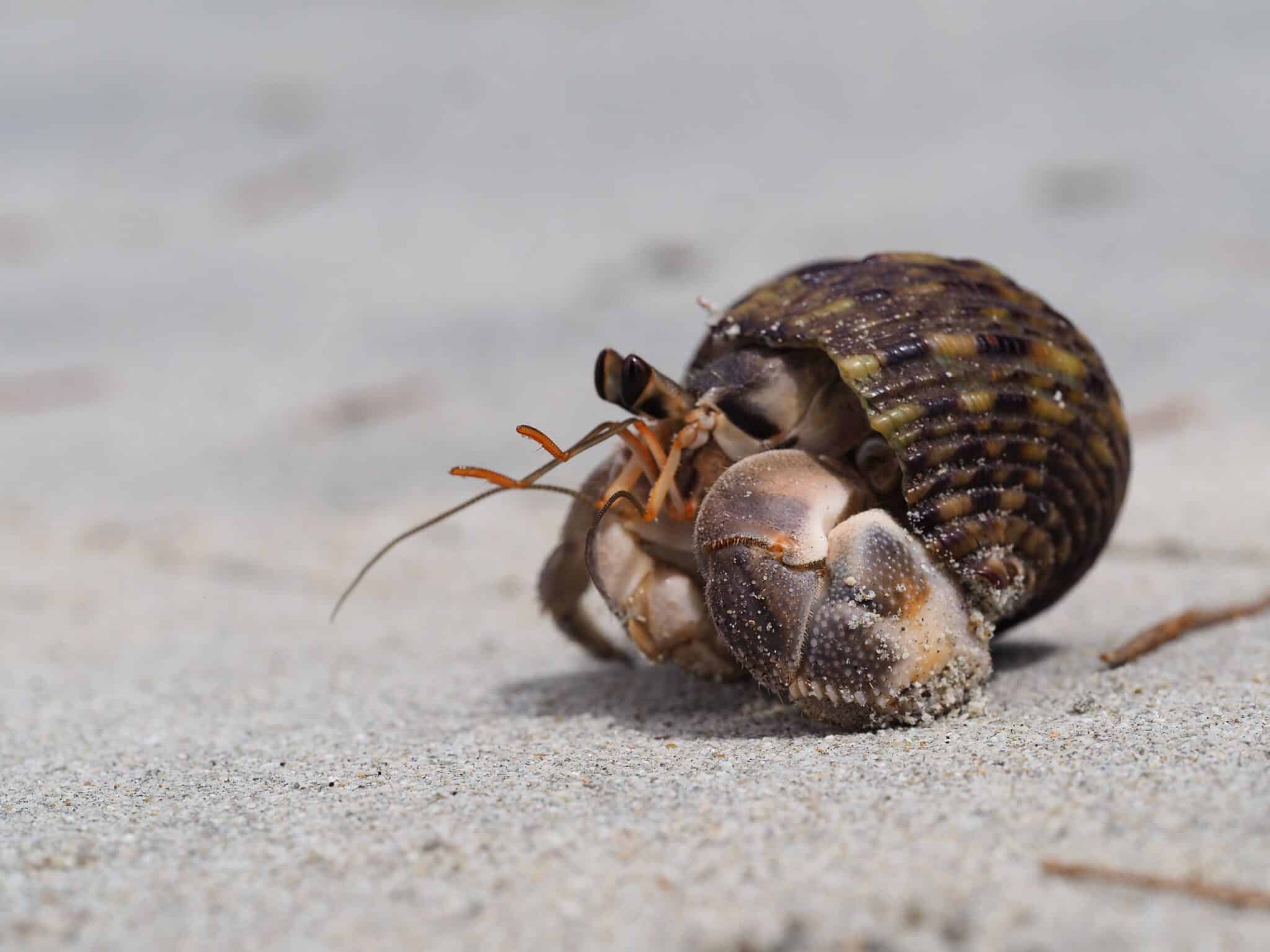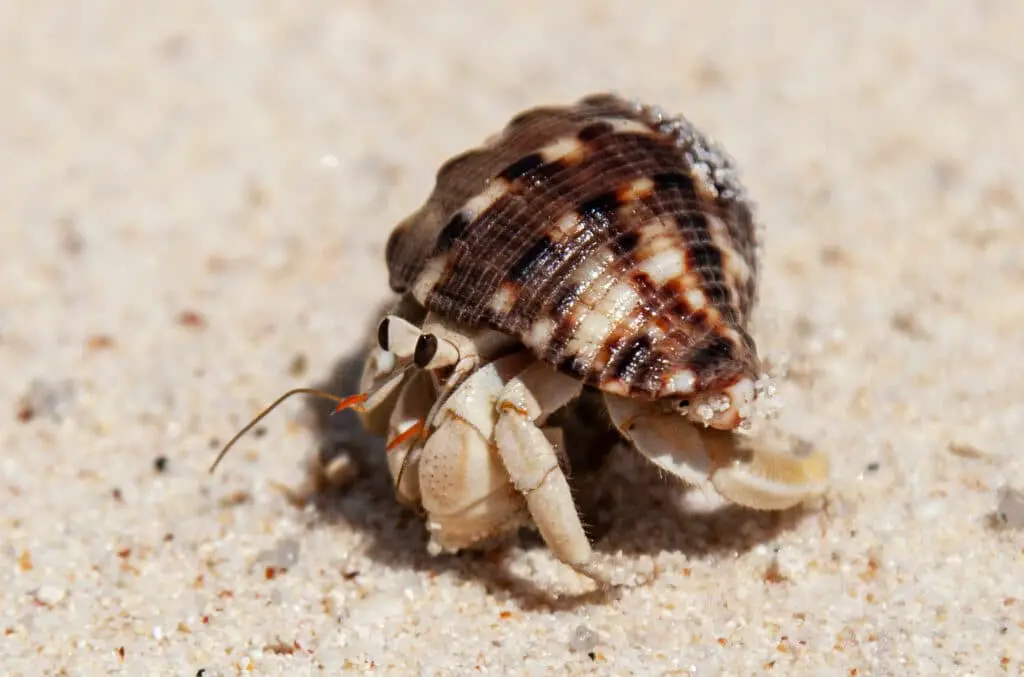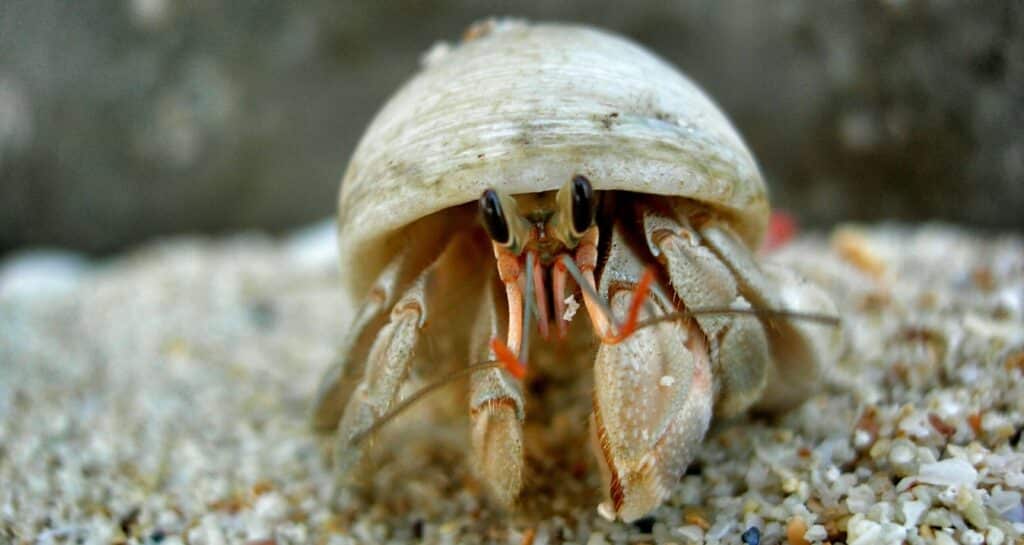How Long Do Hermit Crabs Molt

Introduction
How Long Do Hermit Crabs Molt: Hermit crabs, those small, shelled wonders of the ocean, captivate the imaginations of nature enthusiasts and curious minds alike. Among their many intriguing behaviors, one that stands out is their remarkable ability to molt. Molting is a process by which hermit crabs shed their exoskeletons to accommodate growth, repair damage, and maintain their overall health. It’s a fascinating and vital part of their life cycle, but one that raises questions, including how long it takes for them to complete this process.
Understanding the duration of a hermit crab’s molt is crucial for appreciating the intricacies of their biology and behavior. It sheds light on their adaptability and survival strategies, as well as the challenges they face during this vulnerable period. For hermit crabs, molting is more than a simple act of shedding skin; it’s a carefully orchestrated dance with nature that can determine their fate.
We’ll investigate the factors that influence the duration of molting, the stages involved, and the crucial role it plays in a hermit crab’s life. As we unravel the mysteries of this natural phenomenon, we’ll gain a deeper appreciation for these remarkable creatures and their ability to adapt and thrive in their ever-changing world.

How long does it take for a hermit crab to fully molt?
It is not unusual for an average-sized crab to spend about four to eight weeks going through the whole process, during which time it may stay completely buried in the sand. Some crabs, however, complete the process in a significantly shorter period of time, while large crabs may take longer.
The duration of a hermit crab’s molt can vary widely depending on several factors. On average, the entire molting process, from the initial softening of the old exoskeleton to the hardening of the new one, can take several weeks to a couple of months. However, this timeframe is not set in stone and can be influenced by various factors.
First and foremost, the size and age of the hermit crab play a significant role. Larger crabs generally take longer to molt than smaller ones, and younger crabs tend to molt more frequently and rapidly as they grow. Additionally, the crab’s overall health and nutritional status can affect the duration of the molt. A healthy, well-nourished crab may have a quicker molt compared to one that is stressed or malnourished.
Environmental conditions also play a crucial role. Warmer temperatures and higher humidity levels can expedite the molting process, while cooler, drier conditions may slow it down.
While there is no fixed timeframe, a hermit crab’s molt typically spans from several weeks to a couple of months. This variability underscores the intricate nature of molting and the importance of providing these fascinating creatures with the right conditions to ensure successful and healthy molts.
Is my hermit crab dead or molting?
If they have died, they will start to smell badly within a few days. A hermit crab may take up to two months to complete the entire molting process, so you will know far before that time whether or not they are still alive—and smaller crabs do not take nearly this long to complete the entire molting process.
Distinguishing between a hermit crab that is molting and one that may appear lifeless can be a crucial but challenging task for hermit crab owners. During the molting process, hermit crabs become exceptionally vulnerable and display behaviors that can easily be mistaken for death.
A key indicator that your hermit crab is molting is its choice of seclusion. Hermit crabs typically find a quiet, sheltered spot in their habitat, bury themselves in the substrate, and remain hidden during molt. They may even seal themselves inside their shell with a plug of substrate. During this time, they become motionless and unresponsive, which can be mistaken for death.
In contrast, a dead hermit crab will typically show no signs of movement, even when gently prodded or disturbed. Its body may become rigid, and it will not respond to stimuli.
To differentiate between the two, patience is essential. Molting can take several weeks, while a deceased crab will not show any signs of life over an extended period. Observing subtle signs such as the presence of molted exoskeleton fragments near the crab’s hiding spot or a faint, sweet odor (associated with molting) can also help confirm the molting process.
The line between a molting and a deceased hermit crab can be thin, but with careful observation and knowledge of their behaviors, you can make a more informed assessment and ensure the well-being of your pet.
What happens if you disturb a molting hermit crab?
You may need to remove other hermits while they are molting so they are not disturbed. If you disturb them they could fall apart as they are very soft. Their new extremities could fall off leaving them without a feeder claw for a whole cycle. Usually they do not survive this if they are disturbed.
Disturbing a molting hermit crab can have serious consequences for the crab’s health and well-being. During the molting process, hermit crabs are in a vulnerable and delicate state, and interference can be detrimental in several ways:
- Injury: When a molting crab is disturbed, it may be forced to stop or abandon the molting process prematurely. This interruption can result in physical injuries, as their new exoskeleton is not yet fully formed or hardened. Crabs may suffer limb damage, body injuries, or even death as a result.
- Stress: Hermit crabs are sensitive creatures, and stress can have a significant impact on their health. Being disrupted during molt can cause immense stress, which weakens their immune system and makes them susceptible to diseases and infections.
- Incomplete Molting: Interrupting a molt can lead to incomplete shedding of the old exoskeleton. This can cause the hermit crab to become trapped within its old shell, leading to deformities, discomfort, or even death.
- Increased Vulnerability: A disturbed molting crab may struggle to find a suitable hiding spot again. This exposes them to potential predators, environmental stressors, and further harm.
To avoid these negative consequences, it is essential to create a peaceful and disturbance-free environment for your hermit crab during its molting period. This means refraining from handling or disturbing them, maintaining appropriate temperature and humidity levels, and ensuring they have sufficient substrate for burrowing. Patience and attentiveness to their needs will help ensure a successful molt and the continued well-being of your hermit crab.
How often do hermit crabs molt?
Every 12-18 months
Just as a reptile periodically sheds its skin, a hermit. crab outgrows its exoskeleton and needs to shed it. Most hermit crabs molt every 12-18 months.
The frequency of hermit crab molting varies throughout their lives, with younger crabs molting more frequently than older ones. Molting is a crucial aspect of a hermit crab’s growth and adaptation process.
- Younger Crabs: Hermit crabs are most active molters during their juvenile stages when they experience rapid growth. Younger crabs may molt as frequently as every few weeks to a couple of months. This frequent molting allows them to accommodate their growing bodies and upgrade to larger shells as they outgrow their current ones.
- Adult Crabs: As hermit crabs age and reach maturity, their growth rate slows down, and the frequency of molting decreases. Adult crabs may molt less frequently, typically every several months or even once a year. These molts serve to repair and replace damaged exoskeletons and to facilitate reproductive processes.
- Environmental Factors: Environmental conditions, such as temperature, humidity, and food availability, can also influence the frequency of molting. Optimal conditions can promote more frequent molts, while unfavorable conditions may delay or reduce molting.
Providing them with a stable and suitable environment, including a variety of appropriately sized shells, is essential to support their molting needs and overall well-being. Understanding the molting frequency of your hermit crab can help you provide the best care and ensure their health throughout their life cycle.
Is my hermit crab dead after molting?
If is it hollow and crumbles easily, it is an old exoskeleton. Look inside the nearby shell, and you might find a freshly-molted crab hiding out. If the immobile crab is obviously not an exoskeleton, try picking it up to see if it moves. If it does not react, it’s probably dead.
Is my hermit crab dead after molting? This is a common concern among hermit crab owners. When a hermit crab molts, it sheds its old exoskeleton to grow a new one. During this process, they may appear lifeless, lying motionless on their backs for several days or even weeks. It’s crucial to remember that this is a natural and necessary part of their growth.
During molting, hermit crabs are vulnerable, and they may bury themselves or seek shelter to avoid predators. They absorb water and nutrients from their old exoskeleton to support their growth, which can make them appear limp or shrunken. It’s essential not to disturb a molting hermit crab, as any disruption can be fatal.
To determine if your hermit crab is truly dead after molting, wait patiently. Signs of life include subtle movement or the presence of a soft, newly formed exoskeleton nearby. Be patient and provide a quiet, stable environment with plenty of humidity to support their recovery. If your hermit crab has indeed passed away, it will become apparent when it doesn’t emerge from its molted exoskeleton.
The molting process can be stressful for hermit crab owners, but understanding the natural cycle and being patient is key to ensuring your pet’s well-being.
What is molting in hermit crabs?
Molting in hermit crabs is a fascinating and vital process that plays a crucial role in their growth and survival. Molting is the shedding of their old exoskeleton (outer shell) to make way for a larger one as the hermit crab grows. This process allows them to accommodate their increasing size, repair damaged exoskeletons, and replace lost limbs.
When a hermit crab is preparing to molt, it becomes more reclusive and might dig a burrow or find a sheltered spot to undergo this vulnerable transformation. The entire molting process can take several days to weeks, depending on the crab’s size and condition.
During molting, hermit crabs are extremely delicate and defenseless, as their new exoskeleton is soft and pliable. They absorb water and nutrients from their old exoskeleton to aid in the hardening of the new one. This period of vulnerability is why they often hide during molting, avoiding potential predators.
Once the hermit crab successfully sheds its old exoskeleton, it emerges with a fresh, larger one, signaling the completion of the molting process. It then resumes its usual activities, such as foraging for food and exploring its surroundings.
Understanding the molting process is crucial for hermit crab enthusiasts as it ensures the well-being and proper care of these fascinating crustaceans. Proper conditions, such as maintaining humidity and providing a safe environment, are essential to support their successful molts.
How can I tell if my hermit crab is about to molt?
To determine if your hermit crab is about to molt, there are several key indicators to observe. Firstly, pay attention to changes in behavior. A molting crab will become increasingly lethargic, often burying itself in substrate or seeking seclusion. Reduced activity and a lack of interest in food are common signs. Additionally, inspect its exoskeleton – if it appears faded or dull, molting might be imminent.
A crab’s abdomen will appear swollen and slightly translucent before molting, indicating that it has outgrown its current exoskeleton. The crab may start to shed small pieces of its exoskeleton in the days leading up to the molt.
Setting up a proper molting environment is crucial. Provide a deep, moist substrate for the crab to burrow into, ensuring it can create a safe space for the molting process. Maintain stable temperature and humidity levels to facilitate a successful molt.
Remember, patience is key during this delicate phase. Disturbing a molting hermit crab can be extremely stressful and potentially harmful. Provide a quiet and secure environment, and observe from a respectful distance to ensure your crab undergoes a smooth and successful molt.
How do I know when my hermit crab has completed molting?
Recognizing when a hermit crab has completed molting requires keen observation. The most apparent sign is the emergence of a fresh, vibrant exoskeleton. It will have a distinct sheen and coloration, indicating the crab’s successful shedding of the old, confining shell. Additionally, the crab’s behavior will gradually return to normal. It will become more active, seeking out food and exploring its surroundings.
Another indicator is the condition of the discarded exoskeleton. If you find an intact, empty shell nearby, it’s a clear sign that the molting process is complete. The old exoskeleton will be lifeless and devoid of movement.
It’s essential to exercise patience during this phase, as the crab may still be vulnerable. Provide ample time for it to regain strength and fully harden its new exoskeleton. Continue to offer a balanced diet and maintain optimal environmental conditions to support its post-molt recovery.
A newly molted hermit crab will showcase a glossy, fresh exoskeleton, display increased activity, and leave behind its old shell as evidence of a successful molt. Keep a watchful eye and create a nurturing environment to ensure your crab transitions smoothly into its renewed form.

Conclusion
In our exploration of how long hermit crabs molt, we’ve uncovered the intricacies of this fascinating natural phenomenon. Molting is a crucial process in a hermit crab’s life, allowing them to grow, heal, and adapt to their environment. Through our journey, we’ve learned that the duration of molting can vary significantly, influenced by factors like size, age, and overall health crab, as well as environmental conditions such as temperature and humidity.
Understanding the complexities of hermit crab molting has given us deeper insights into the resilience and adaptability of these remarkable creatures. It also highlights the importance of providing them with optimal living conditions in captivity to ensure successful molts and overall well-being.
Our exploration has shed light on the vulnerabilities hermit crabs face during molting. As they shed their old exoskeleton and wait for their new one to harden, they are defenseless, making them easy prey for predators. This underscores the critical role that molting plays in their survival and the need to protect their habitats in the wild.
The process of how long hermit crabs molt is a testament to the wonders of nature. It showcases the incredible mechanisms these creatures have developed to adapt and thrive in their ever-changing world, leaving us with a newfound appreciation for the complexity and beauty of the natural world.



